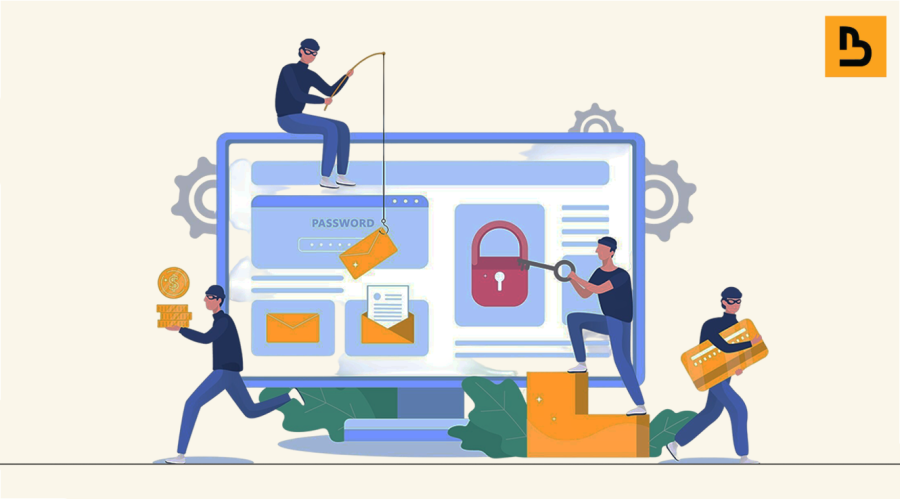E-commerce frauds has been a reality in online shopping, as much as it is in daily life. Online payment frauds cost businesses an estimated $48 billion all over the world every year. In the meantime, 43% of e-commerce consumers in the past years stated that they became victims of payment fraud.
Such increasing numbers present both the shopper and the merchant with a risk of fraudulent websites and stolen credit cards, which are only some of the dangers of phishing. Awareness of such dangers is the initial step of safe shopping. This blog defines e-commerce frauds, how to identify it, and what can be done by using the services of fraud prevention for e-commerce, to protect your wallet and data.
Protect Your Brand & Recover Revenue With Bytescare's Brand Protection software
What is E-commerce Fraud?
E-commerce fraud is the practice of defrauding or being defrauded in the case of online shopping with the aim of stealing money, goods, or personal information. It may occur by placing counterfeit orders, hacking into bank accounts, and masquerading as an honest customer. Knowing what constitutes e-commerce frauds enables consumers and companies to be able to quickly identify the fraud before it happens and intervene.
Fraudsters create websites that appear genuine or steal usernames and passwords to hack into accounts. They also employ such tricks as phishing emails about having a problem or setting up fake product listings. Those approaches rob both money and personal data and confidence.
Awareness of these warning signs can help one to be a non-victim. When something looks suspicious, such as the price being too low, or the email being strange, or the payment page not loading correctly, then it is time to be suspicious.
Types of E-commerce Frauds to Watch Out For
Payment Fraud
This occurs when stolen payment information or credit cards are used to buy goods. The businessman suffers a loss and the customers might be forced to handle fraudulent bills.
Account Takeover Fraud
Fraudsters access the account of an actual customer (through hacking or phishing) and make an order, alter shipping information, or steal stored payment methods.
Friendly Fraud (Chargeback Fraud)
A customer purchases an item, after which they say they have not received the item or it was defective, even when it reached them in good condition. They demand chargebacks, which hurt merchants even in instances where there was a legitimate transaction.
Phishing and Fake Websites
Fraudsters use counterfeit emails or create websites with the appearance of authentic brands. They fool individuals into typing in a login, payment, or personal data. As soon as they obtain it, they can use it to commit fraud.
Protect Your Brand & Recover Revenue With Bytescare's Brand Protection software
How to Detect E-commerce Frauds Early?
- Red flags of behavior: Be suspicious of a high volume of orders, the combination of IP address and billing address, or numerous orders from the same user within a limited time frame. These may be signs of fraud.
- Apply fraud-detecting tools on e-commerce: AI and machine learning can warn you instantly of any fraudulent activities or suspicious behavior. Automated risk scoring assists in the determination of which orders require additional checks.
- Keep track of past records: See how normal business operations appear, and then notice anything out of the ordinary, like a new shipping address, suspicious device activity, or unusual payment procedures.
What are the Ways to Prevent E Commerce Fraud
These are the methods of preventing e commerce fraud using practical methods:
- Multi-tiered authentication and password policies.
- On-time check of payments.
- Address Verification Service (AVS) & CVV check.
- Order Monitoring system (identify irregular transaction volume, odd shipping addresses)
- Regular security audits
When these measures are combined, protection is enhanced and false positives are minimized. They are some of the main components of e-commerce fraud detection and protection services for any serious online merchant.
Protect Your Brand & Recover Revenue With Bytescare's Brand Protection software
Enjoy Safe Online Shopping
It is important to have a proactive approach to fraud prevention. Instead of responding to the damage, it is better to use professional fraud protection services to fight online fraud and remain ahead of the upcoming threat. You can secure payments and customer data even better with the help of such tools as constant monitoring, risk scoring, and strong authentication.
It is common knowledge that waiting until it is too late is costlier and results in lost customer confidence. This is why we, at Bytescare, pay attention to such instruments as constant monitoring, risk scoring, and strong authentication to prevent fraud. We also aim to secure payments and customer information and ensure that secure online shopping will be achievable for all businesses with which we do business.
The Most Widely Used Brand Protection Software
Find, track, and remove counterfeit listings and sellers with Bytescare Brand Protection software

FAQ
How can I protect my online payments from fraud?
Use secure ways of payment, such as credit cards or trusted wallets and two-factor authentication, and do not save card information on websites that are not familiar. Track your bank statements frequently and check whether any suspicious transactions are made.
What should I do if I entered my card details on a suspicious site?
Your bank or card issuing company should immediately be contacted, and the card blocked and replaced. In addition, change your internet passwords to minimize the risk further.
Are Buy Now, Pay Later checkouts safe?
Yes, the majority of Buy Now, Pay Later services are secure when they are applied on legitimate sites. It is always best to ensure that the provider is credible and the site is secure before providing payment information.
How often should I change my shopping passwords?
Enter new shopping passwords after every 36 months. Use distinctive and powerful combinations and never use the same password on different platforms.
Where should I report an online shopping scam in India?
Reports of scams may be made to the National Cyber Crime Reporting Portal (cybercrime.gov.in) or your local cyber cell. The prompt step will prevent additional abuse.
How do I know if I am chatting with a scammer?
Watch out for such red flags as urgent money, bad grammar, or links to unfamiliar sites. Fraudsters like to evade direct questions and get you to make a quick decision.
Ready to Secure Your Online Presence?
You are at the right place, contact us to know more.


